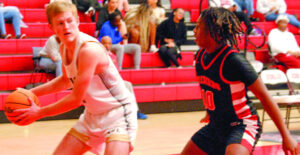Brown's Park bull part two
By Staff
May 25, 2001
On this third morning of my 2000 elk hunt on Wanda Walker's ranch and adjoining public land in northwest Colorado, several herd bulls were sounding off with their threatening screams. This sound is as thrilling as the mating call of a wild turkey gobbler. In fact a hunter's calling to each has its similarities. However their response to such calling can arise from different compulsions. The gobbler that responds to your yelps wants to romance you. A bull elk answers your challenging bugles because he wants to kill you. Both are exciting indeed.
Typically, the bull elk had screamed at each other and the rest of the world all night long in the juniper thickets and open "parks" of remote, rocky terrain known as Brown's Park. I had left my tent camp some 30 minutes earlier and arrived before daylight so I could position myself near a bull under the cover of darkness.
The bull nearest me sounded like the dominant one of the area. His bugle began as a deafening roar, ascended to a shrill scream and tailed off with an elongated grunt not unlike a huge hog. I took off after him, notwithstanding the fact that every bull I had stalked so far during the 11 day season had outdistanced me.
At dawn, elk herds leave the open grazing areas where they have fed and watered all night. They head for daytime bedding areas, usually on higher slopes and benches. Observed through binoculars, they appear to be simply wandering along as they nibble brush and follow a lead cow that chooses a bedding site after climbing an hour or two. But their speed is deceptive. Their long legs let them amble faster than a man can climb through the boulders and sagebrush to overtake them.
Level stalk
Fortunately, this herd was headed for relatively level country. And for the first mile it seemed I would catch up. The bull bugled every few minutes which helped me course the herd. I got so close that I eased around juniper trees several times with raised rifle, thinking I would be looking at them. The bull's cries were so loud that I was certain the distance to him was only a hundred yards or so time after time. It would be later in the stalk before I realized that sound carries far better in the thin, low juniper cover, low density high altitude air and across the rocky terrain than in the wooded lowlands to which I was accustomed.
I followed on and on, tiring significantly because I had to zig-zag in order to keep the wind in my favor. Herded elk travel with the wind. This puzzled me at first until I realized that most of their danger comes from behind because the often constant bugling of the herd bull gives trailing predators (like myself) an auditory target to stalk.
After two hours without sighting the herd, my weariness began to take a psychological toll. I had stumbled and sneaked more than 2 miles. But each time I would stop and consider giving up, the bull would scream and I would trudge on. Several times I looked at a certain landmark and vowed that if I hadn't caught up by the time I reached it I would quit. Each time the bull would roar and re-energize me. When I crossed a ranch trail, I knew I couldn't physically go much farther, so I left my back pack there to lighten my load.
Last chance
I pushed ahead on slightly downhill ground for one last run at the herd. After covering what later measured with my GPS unit another 7 tenths of a mile, I rounded a juniper expecting the bull to be 50 yards distance by the thunderous roar of his bugle. There he was, 160 yards away! What a voice he had!
He was posed as if for a painting on one of 3 ledges carved into solid red rock by a stream, now dry but showing evidence of a history of floods. From the ledge, he looked down on 6 cows that I could see as I dropped into a sitting position for the shot. They hadn't seen me.
Using precise range measurement with a Bushnell range finder, I had checked my rifle's accuracy at 200 yards the afternoon before. I knew if I did my part, the rifle would do the rest. The bull took a few steps and I instinctively gave a quick, loud sound from my throat that made him stop. One 160 grain Nosler partition handload from my .280 did its job and I had the Brown's Park bull. His matched 6 X 6 antlers had ivory tips, sweeping brow tines and long sixth points. He was the bull that I had dreamed about for more than 50 years.






